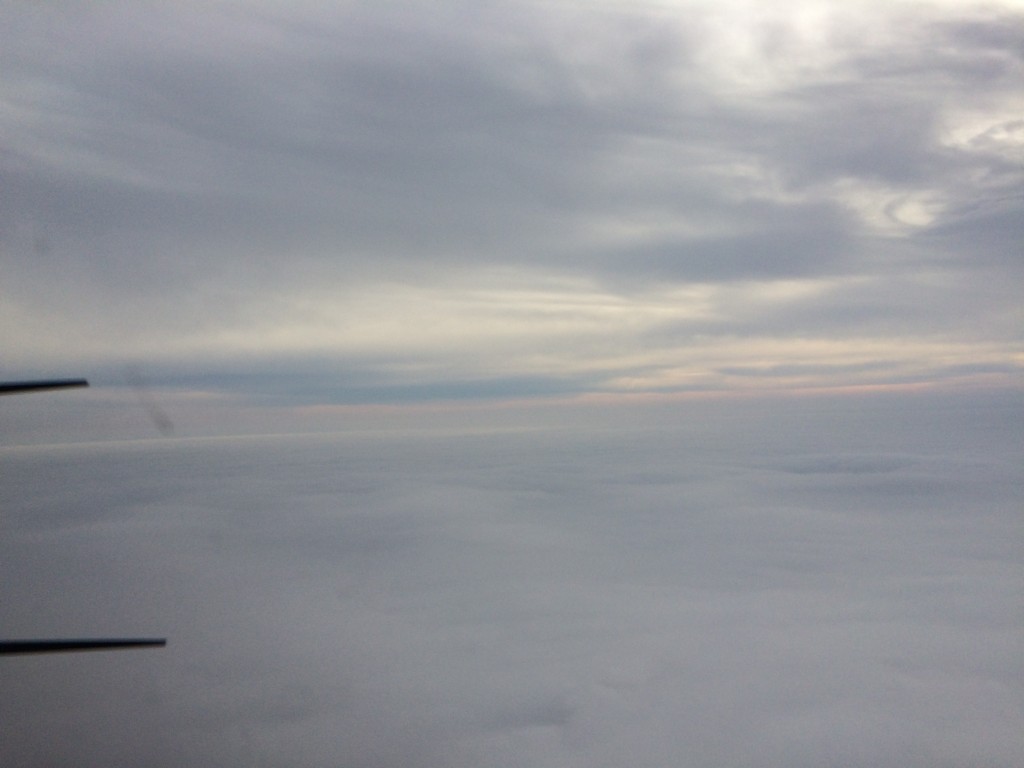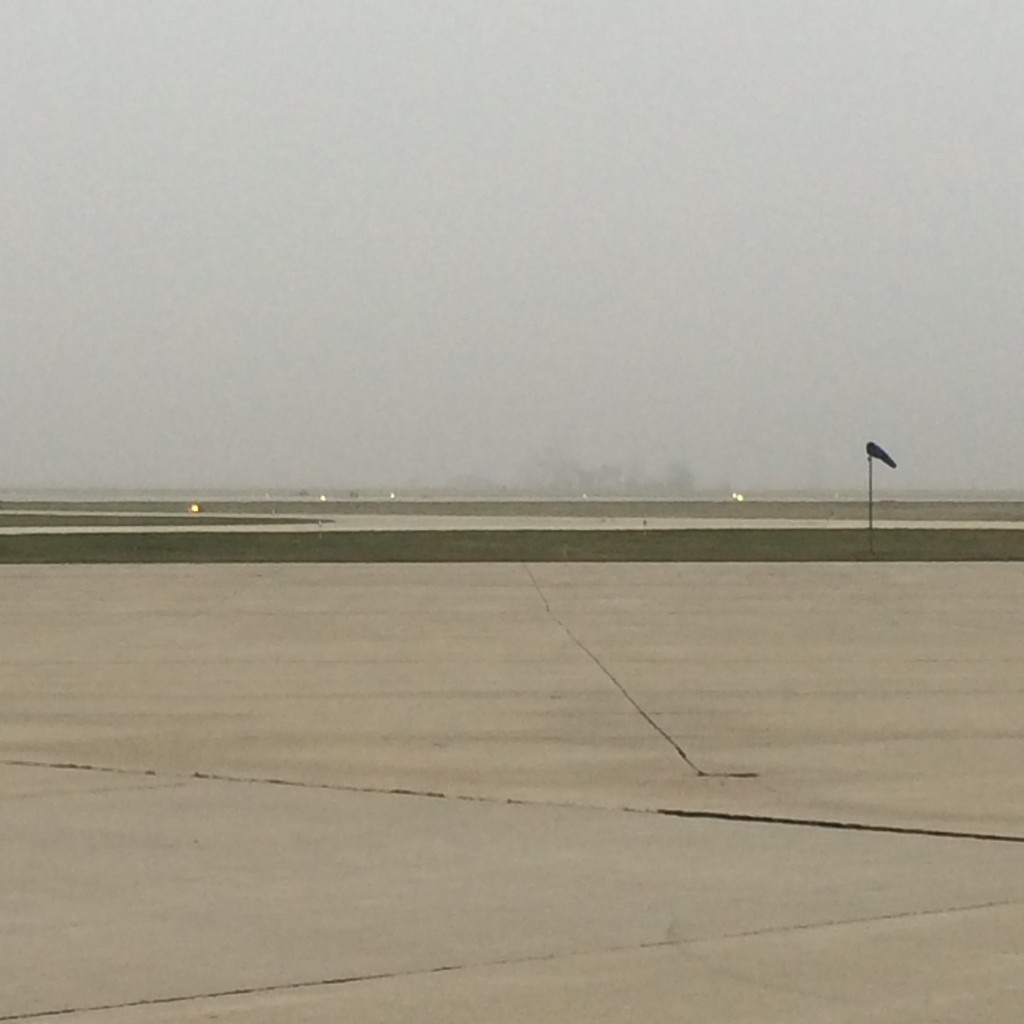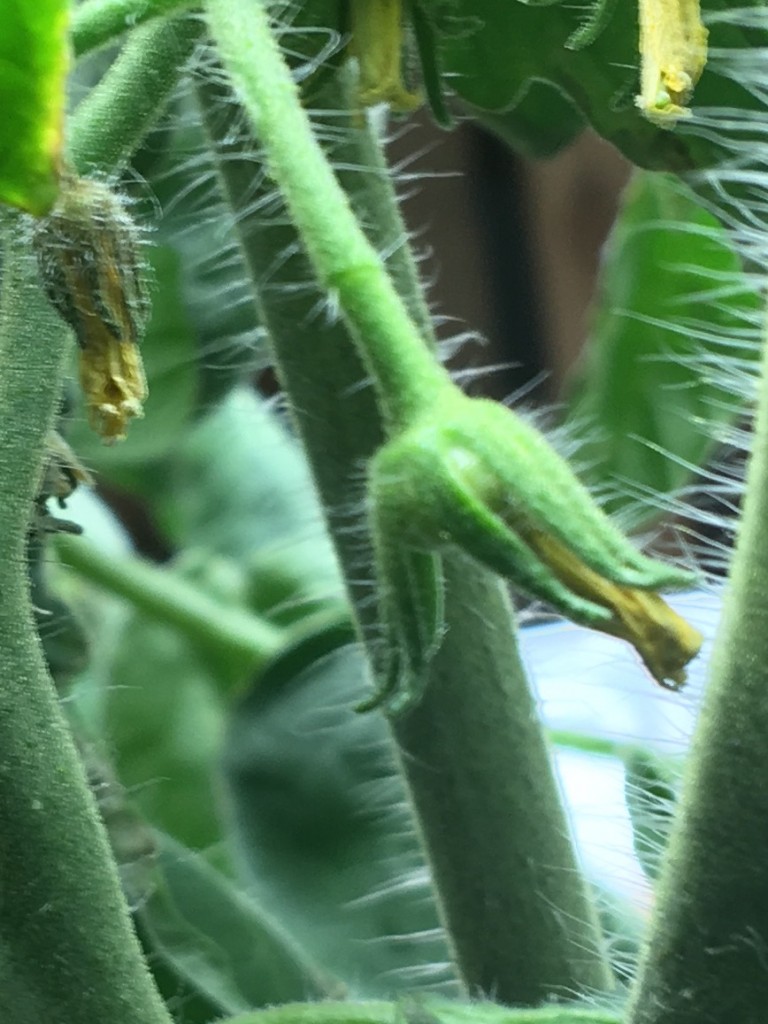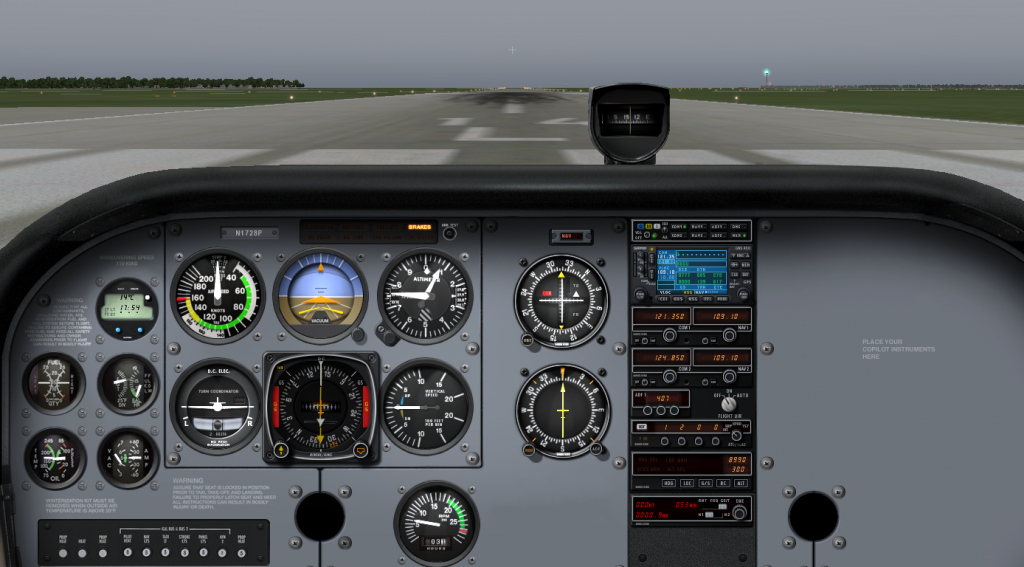My 3rd instrument lesson turned adventurous today. After practicing my first ever ILS approach at KBMI Bloomington, IL I flew the missed approach and practiced a VOR/DME hold for a while. TAF was good for the area but a cloud layer formed underneath us. We decided to head back to our base KCMI Champaign IFR.
No problem, I tracked a VOR radial back to Champaign and we setup for the VOR/DME 14L approach. We heard American Airlines (Envoy) ahead of us go missed on the GPS 14L approach (not a good sign), then Champaign approach informed us the ceiling had gone too low (300 AGL) for that approach and only the 32R ILS was being used. So they flew us all the way across the airspace and we got vectored for the ILS.
During that time my instructor leaned up the mixture to conserve fuel and I knew from that he was concerned about how far we’d have to go to find the ground if we had to go missed.
Here’s our view from above the fog, about 3,000 AGL, before we descended on our vector to pickup the localizer.

I descended into actual cloud layer for the first time. Got some spatial disorientation (it’s different than the hood) and kept it pretty stable. We joined the localizer and intercepted the glideslope, looking good. We had a tailwind and our fast groundspeed required a faster descent rate than I’m used to. I got a couple of dots high a couple of times, but overall kept the needles near center.
About 100 feet above our minimum altitude of 200 AGL, we still saw nothing but white. My needles were getting wobbly, so my instructor took the controls. Just then he said “I see it!” and within seconds we had landed.
We taxied back and he told me he’s never flown an ILS down to actual IMC minimums before. He’s got a ton of experience, but I guess that’s not something you set yourself up to do on purpose. He complimented me on my flying on my second-ever ILS, and I thanked him for his quick decision making in the last few seconds of our flight.
We were the last plane that made it in. I took this picture from the ramp after I got out of the plane.

I am excited that I got to have that experience. At the time I was stoked. I love instrument flying so far. Seven hours later I am a little freaked about the situation we could have found ourselves in if we had to go missed on the ILS, or if I have made mistakes on that approach. At the same time I can’t wait to go back up for my next instrument lesson.



